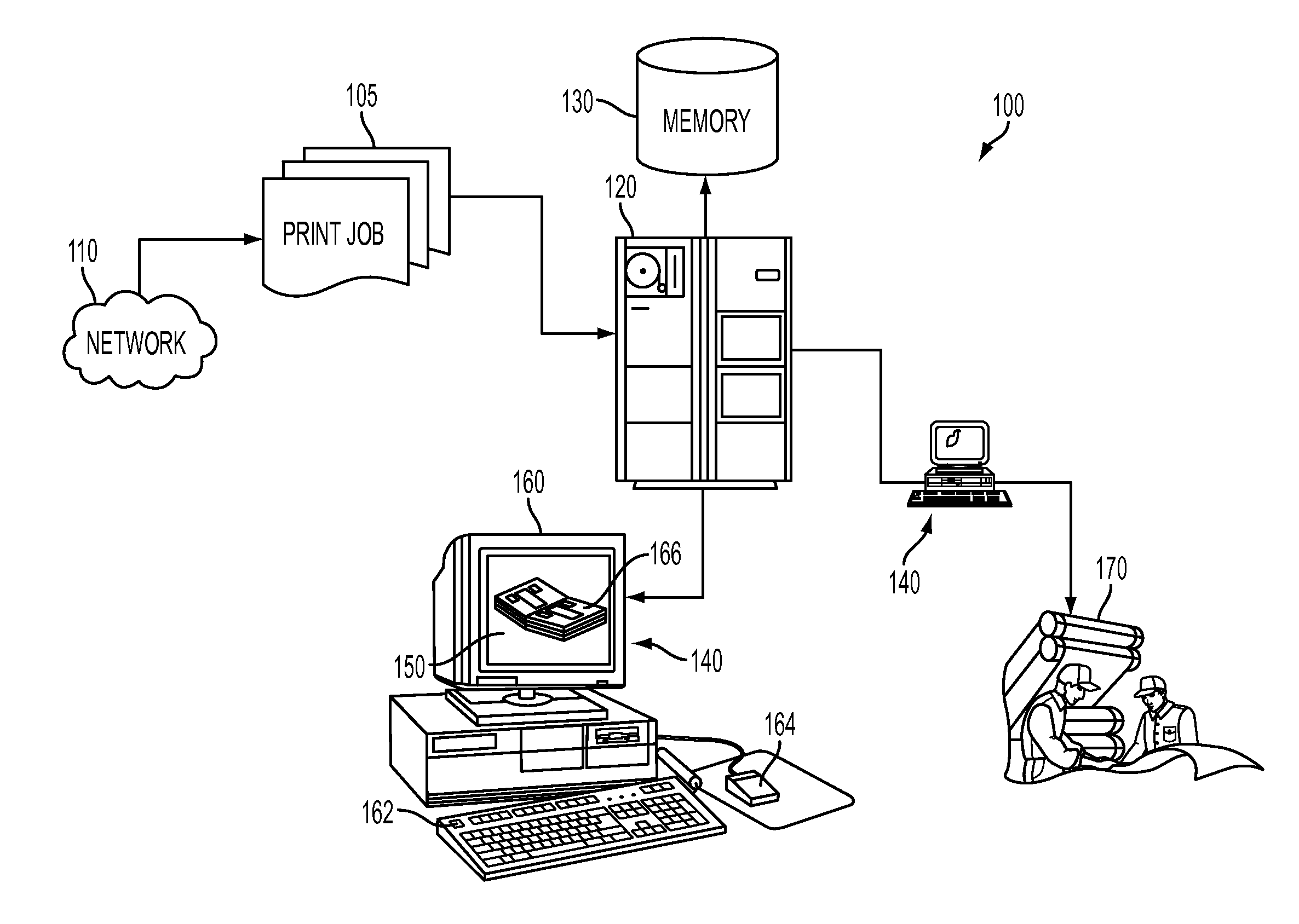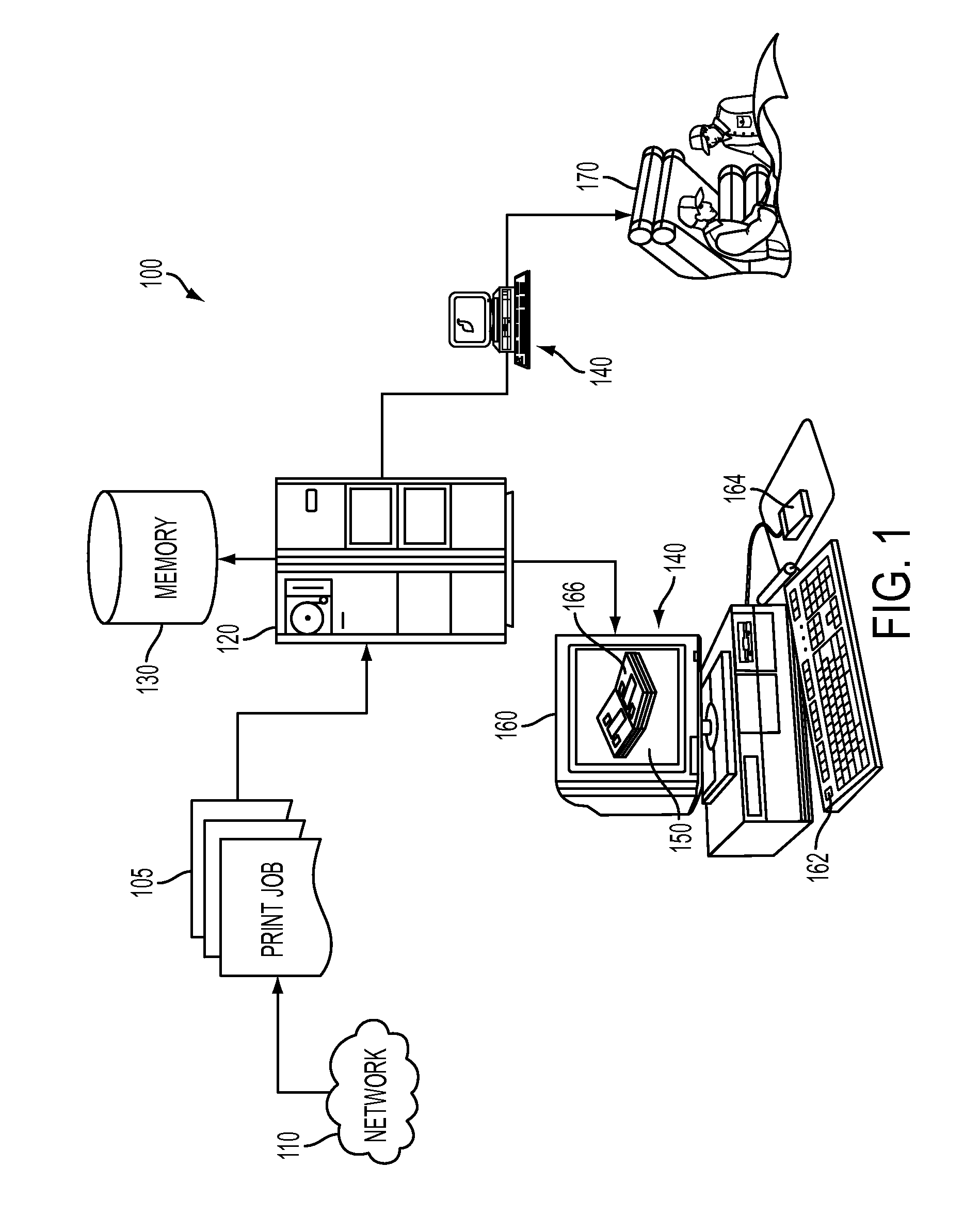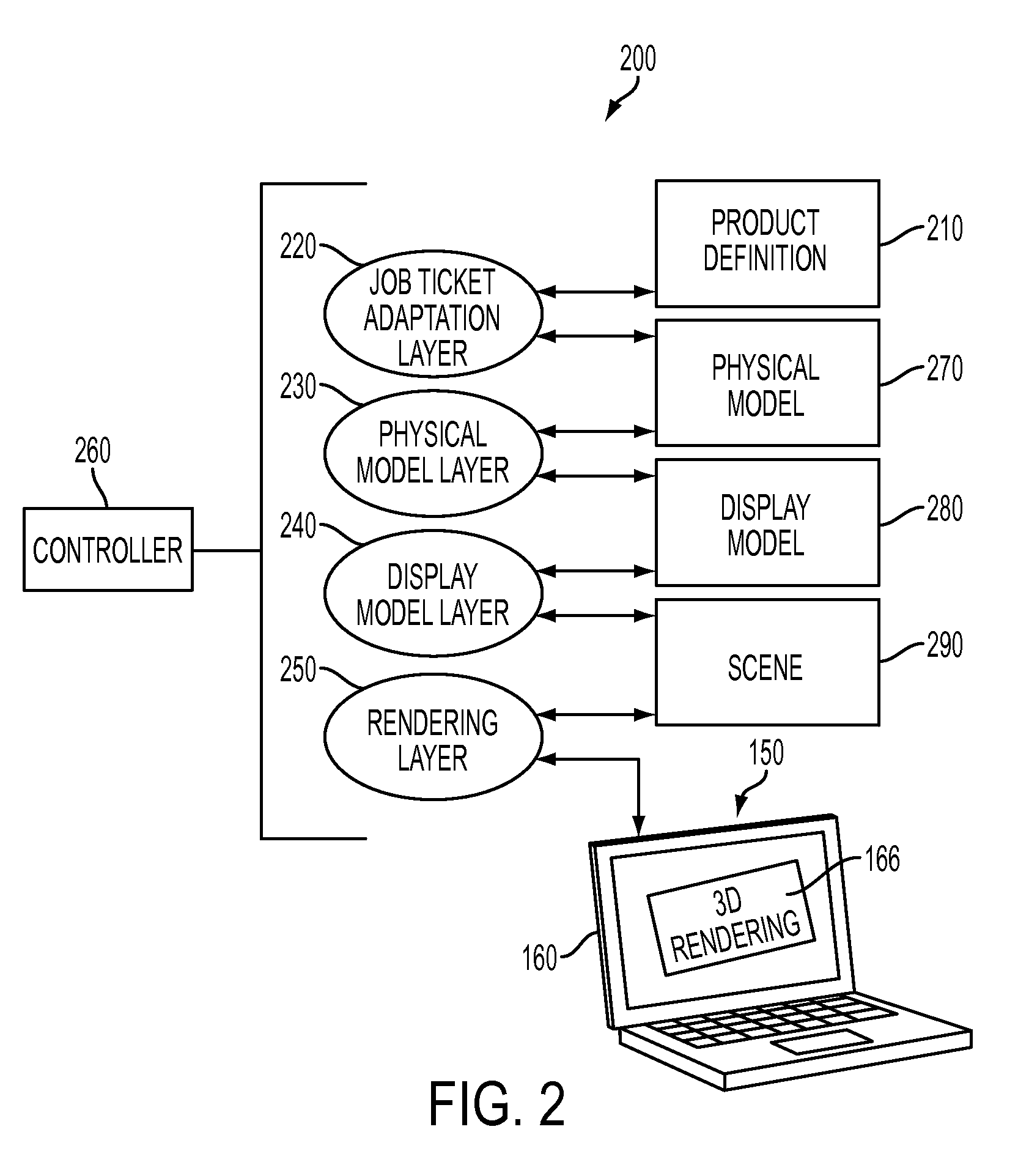System architecture for virtual rendering of a print production piece
a technology of system architecture and print production, applied in the field of preprint virtual rendering and depiction of print jobs, can solve the problems that the technology of producing virtual renderings of finished print pieces is generally limited to providing only a two-dimensional perspective, so as to improve efficiency, reduce production costs, and improve business. the effect of condu
- Summary
- Abstract
- Description
- Claims
- Application Information
AI Technical Summary
Benefits of technology
Problems solved by technology
Method used
Image
Examples
Embodiment Construction
1.0 System and Architecture
[0070]In FIG. 1 there is depicted an exemplary system 100 upon which the following disclosure and methodology may be implemented. It is to be understood that certain aspects of the system would operate in accordance with pre-programmed instructions stored on various media and used to operate a local or networked computer system to carry out such features, and perhaps across a plurality of interconnected computers at a time. Such a system might include a commercially available personal computer with appropriate graphics rendering capability, that can also be associated with a computer storage medium (e.g., removable disk or similar portable media, RAM, ROM, and other non-transitory means for storing digital information that may be at least read by a computer) or similar memory devices and where the system is accessible, perhaps via an Internet or intranet for submission of print jobs. It is also contemplated that one or more aspects of the system may be imp...
PUM
 Login to View More
Login to View More Abstract
Description
Claims
Application Information
 Login to View More
Login to View More - R&D
- Intellectual Property
- Life Sciences
- Materials
- Tech Scout
- Unparalleled Data Quality
- Higher Quality Content
- 60% Fewer Hallucinations
Browse by: Latest US Patents, China's latest patents, Technical Efficacy Thesaurus, Application Domain, Technology Topic, Popular Technical Reports.
© 2025 PatSnap. All rights reserved.Legal|Privacy policy|Modern Slavery Act Transparency Statement|Sitemap|About US| Contact US: help@patsnap.com



